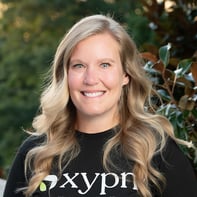The Five C’s of Credit: Leverage Loans To Grow Your Firm as an Advisor
Share this
Much like that pair of sweatpants you’ve been wearing every day since the pandemic set in, consumer debt is a well-worn topic in financial planning. While most advisors are adept at helping their clients through evaluating, applying for, and obtaining a consumer loan, there seems to be a gap in the industry when it comes to commercial debt. This informational gap becomes a hindrance to you when, as a growth-minded business owner, the goals that you have for your business outpace your capital.
If you decide that you want to utilize leverage to make those goals come to fruition, it’s essential to understand how lenders evaluate whether or not they will extend credit to you. Because commercial loans are inherently riskier to a lending institution than consumer loans, they seriously evaluate commercial lending candidates. With six years of experience as a commercial and agricultural lender, I wanted to share all of the inside information I have related to all things commercial debt. (This information will also prove hugely valuable for your entrepreneur clients.) Today, I’ll introduce you to the five C’s of credit that every lender reviews for each loan request.
Consumer loans (mortgage, home equity lines of credit, personal, auto) are a gosh dang delight as a loan officer. This is because the decision is made almost entirely by checking boxes and fitting the borrower into the right ratios. Loan to Appraised Value under 80%? Check. Credit score above 650? Check. Debt to Income ratio under 43%? Check. You get the idea. Most lenders have approval software to plug the borrower information in, click a button, and ta-da! You have an approved loan. There is minimal risk to the institution as the loan is only approved if it meets their program underwriting requirements. A bonus to the lending institution is that these loans will not stay on the books for long. The majority of home loans are written with the intent of being sold immediately to the secondary market; auto and personal loans have similarly short terms of two to seven years. The less time the loan spends with the institution, the less risk of default by the borrower and the institution not earning money on that loan.
Commercial loans (commercial mortgage, line of credit, bridge, construction) are a delight for a whole different reason. They are typically very lucrative for the lending institution. Most lenders retain their commercial loans in-house, meaning they will continue to service the loan and earn the interest and fees for the full term. The upside is that the interest margin is significant, and commercial real estate loans can have a term of up to 20 years. The downside is extending credit to a commercial customer is inherently riskier. The institution has to determine if the customer has proven their financial and management capabilities to the extent that they can be counted on to stay in business (ahem, profitably) for the length of the loan term. So how do they do that? I’ve heard theories from crystal balls to tarot cards, but the reality is that lenders rely on the five C’s of credit.
The lender will review the five C’s for every loan request. They will evaluate the borrower’s strengths and weaknesses in each category to determine if the request is a good fit for their lending standards. Institutions may vary in the weight they put on the individual categories and may also differ depending on the circumstances of the request. Ultimately, the goal is to understand each category as extensively as possible to determine the probability of loan repayment.
Character
This is not the type of character that your Uncle Sal is. At the heart of the credit decision is determining if the borrower will continue to be successful. Your personal credit score is helpful in this as it is indicative of money management practices and repayment history. Most commercial lenders look for a minimum score of 680. You may qualify with a score below that, but you will pay a higher interest rate to compensate for the perceived additional risk.
Another metric used is the Dun and Bradstreet (D&B) PAYDEX score. D&B tracks various financial health indicators, including business credit history and payment trends, to assign a PAYDEX score between 1-100 (100 being the best). This score helps a lender determine repayment probability; 0-49 indicates a high risk of default or late payment, 50-79 indicates moderate risk, and 80-100 indicates low risk.
Numbers aren’t the only name in the character game. Lenders will also evaluate your experience, education, and reputation. What positions have you previously held that demonstrate your ability to successfully operate (or continue to operate) a profitable business? What degrees or designations do you have that make you competitive in your industry and well equipped as an entrepreneur? Are you regarded as an individual that gives back to your community and is involved in local commerce? What mentors and support do you have to fall back on if you need additional guidance to make your business work? These are all questions lenders will consider when determining your character viability as a customer.
Capital
You know the old saying it takes money to make money? Well, it can also be said that it takes money to borrow money. Commercial lenders will expect that you have adequate liquidity and equity in your business to manage day-to-day expenses as well as unforeseen costs. They will also evaluate the quality of your assets and your existing debt structure, as both can potentially affect repayment ability. In short, this is an evaluation of your entity balance sheet. There are several key ratios they will use to determine this:
Liquidity: short-term cash resources
Working Capital (current assets – current liabilities)
Truly my favorite term in finance because it accurately describes what this metric is. This is cash that you have available to put to work in your business. As a reminder, current assets are expected to be converted to cash in a 12-month period; current liabilities are obligations expected to be due in that same timeframe. Adequate working capital puts lenders at ease because this is money that can be used to navigate adversity, reinvest in your business, or make long-term debt payments if necessary. What does it mean to have adequate working capital? The short answer is ‘it depends’ (doesn’t it always?). You are going to hear this a lot in this blog, but it will be specific to your industry, strength in other credit factors, and the institution you are working with.
Current ratio (current assets divided by current liabilities)
At a minimum, a commercial lender will expect that you have a current ratio of 1:1, meaning you have $1 of expected cash conversion in the next 12 months for every $1 of operating expense or debt obligation (including the new debt you are applying for).
Solvency: long-term cash resources
Debt-to-Asset Ratio (total liabilities divided by total assets)
This is the major player in solvency evaluation. A debt-to-asset ratio over 50% means that creditors own more of your business than you do. This can decrease your flexibility in decision-making due to the requirements of the respective lenders. It can also reduce your ability to reinvest in your business or take advantage of opportunities because of the stress on your earnings to repay debt. The ratio a lender will look for will vary by institution and industry, but generally, they will expect a ratio below 65% post-close of the new loan.
Asset quality
Another factor a lender will be interested in on your balance sheet is how you have been investing your capital. This reflects your management capabilities and how well you are preparing your business to meet your goals. Are the majority of your account receivables more than 90 days old? This could indicate issues with collection. Do you have a brand new $75,000 company SUV but are behind on your accounts payable? A lender will decidedly not love that. Are there quality assets that are helpful for the business but could be sold off in the event of an emergency? Always good to have a plan B or C (technically referred to as secondary or tertiary repayment). It’s important to manage your balance sheet efficiently and effectively with both short-term and long-term goals in mind.
Capacity
The next step in our journey brings us to evaluate if your business has the earnings to repay the debt you are applying for. A lender will analyze your historical and pro-forma earnings to determine your ability to manage a whole slew of expenses: the new loan, existing debt obligations, operating expenses, necessary capital purchases, maintaining a reserve for adversity, and paying yourself an adequate wage. Whew—I need to catch my breath.
To spice things up, most lenders use accrual adjustments (instead of cash-flow) to truly capture net income. I could write a whole different blog on accrual adjustments, but I will sum it up with a straightforward example: on January 1, 2021, if you had $10,000 in accounts receivable, that $10,000 counts for earnings in 2020, not 2021. This is because accruals seek to determine when income was earned, not when it was received (paid). Adjustments will be made to items like inventory and accounts receivable to determine your accrual-adjusted earnings in any given year. The same will be done to expenses currently accounts payable to determine when the expense was incurred, not actually paid.
Once the lender has determined your net income, there is still more tinkering to be done. Commercial lenders will then evaluate earnings before interest, taxes, depreciation, and amortization (EBITDA). It’s a mouthful—here’s how it is calculated:
Net Income
Add back: Interest
Add back: Taxes
Add back: Depreciation
Add back: Amortization
Equals: EBITDA
This new number tracks how much actual cash is available outside operating expenses. That’s it, right? Not quite. Next, the lender will want to understand where that money has historically gone, where it can go, and what is leftover. This is referred to as the fixed charge coverage margin (FCCM) and is calculated as follows:
EBITDA
Less: Taxes
Less: Wages/distributions from the business
Less: Principal and Interest payments on debt (existing and new)
Less: Capital purchases
Equals: FCCM
FCCM determines if your business produces enough cash for all of your needs. If it is negative, you would need to seek additional revenue or provide owner contributions to make the business work. In this scenario, you are eating into your working capital (or using personal funds) to cover business obligations rather than the business paying its own bills. A lender is unlikely to take up this risk. If it is zero, your business could be vulnerable as you are only breaking even, and there is no room for adversity. A surplus means you have the earnings capacity to assume this new debt obligation, cover the other cash requirements of your business, and maintain a reserve for unforeseen costs. Based on the other metrics of your business, it will be up to the lender to determine how much surplus is adequate.
Collateral
For the most part, a commercial lender will require collateral to secure the loan request. This is an additional safeguard for the institution; if your business fails, the lender will have ownership of assets they can sell to repay the debt obligation. If they determine that all other credit factors are strong, they may agree to write the loan unsecured, but this is rare, and you should expect to sign over collateral.
In commercial lending, the lender prefers to secure the assets that directly relate to loan purpose. For example, if the loan request is for an operating line of credit, they will secure accounts receivable, inventory, or other current assets. If it is for the purchase or construction of a building, the building will be the security. Every lending institution evaluates two factors when determining what and how much collateral to request: what the collateral worth (appraised value) and how much they will lend on that amount (loan to value).
The key to collateral is that the lender also has to consider their costs to sell the asset to evaluate what they are truly likely to get back if the loan defaults. Real estate is generally discounted 8-15%, depending on the quality of the property and local market health. This means that a $100,000 property is actually worth $85,000-$92,000 to the lender when they factor in their costs and time to sell that property.
Another example is current assets like accounts receivable and inventory. An A/R that is less than 30 days old will be discounted less than one that is 90 days past due. Inventory that turns over appropriately will be discounted less than a product that has been sitting in a warehouse and may be difficult to sell. Ultimately, every lender will have a different method for this. Still, it’s important to understand that they may ask for additional collateral or offer a reduced loan amount based on their evaluation of the collateral you have.
Loan to value is the amount the lender feels comfortable lending you based on the collateral value. This will vary by industry, loan purpose, and collateral type. For commercial real estate, bridge, and construction loans, the max percentage ranges from 50-70% (meaning on a $100,000 property, you could be lent up to $50,000-$70,000). For operating and bridge loans, the max is generally 65% due to the increased risk of selling short-term assets. Feel empowered to have a discussion with your lender about their loan to value limits to make sure they can provide the loan amount you need.
Conditions
We have arrived at our last C, conditions. It’s the least exciting by far (don’t tell conditions I said that). Conditions are just the structure of your loan and need to be evaluated to ensure that they are appropriate for cash flow and loan purposes. Conditions include the following:
- Loan purpose
- Loan term (length of repayment)
- Payment schedule (monthly, quarterly, semi-annual, annual)
- Interest rate
- Loan signer(s)
Covenants (bonus C!)
Covenants don’t quite make the cut as an official C but deserve a place on the bench. Your lender will consider if any financial or reporting covenants are required in order to monitor any specific financial metric. Most common will be some kind of leverage covenant (i.e., restriction on the amount of additional debt), minimum working capital, require the borrower to provide annual earnings information, etc. This can be negotiable, but in some cases, covenants are the only way they institutionally get comfortable with a loan. If you don’t have great credit or are just starting out, your lender will not have the ability to be accommodating when it comes to negotiating loan terms.
We did it! We’ve covered all the credit factors commercial lenders evaluate when determining if they should extend you a loan. So, what if your financial situation doesn’t meet the thresholds mentioned in one or more of these areas? Don’t get discouraged. Your lender will analyze each “C” and may decide that your strength in one area mitigates the risk in another enough to move forward with the loan request. There are also loan programs that exist for small businesses and new business owners that have less restrictive underwriting requirements to make it possible for you to still obtain credit. Also, as I mentioned too many times to count, requirements will vary by institution. It may be that you need to work with several different lenders before you find the loan officer and a lending institution that best fits your needs.
So what next? If you are ready to move forward with a loan request, here are my tips for finding the right lender and preparing for the application.
I recommend starting with the bank that you currently have deposits with. Lenders love helping existing customers, and having a deposit history will also give them a feel for your business and loan needs. Make sure that you are clear from the outset about the purpose of your loan so that you talk to the right loan officer. Just getting started with your business and don’t have a deposit history? That’s ok. Do some research in your community to find a local bank or credit union that has a good reputation for working with small businesses.
Still not sure where to look? Ask your professional networks for recommendations. There are reputable online banks, but if you are just getting started, there will be a lot of legwork involved in your evaluation. The banking industry is still catching up on the virtual front, so you should expect in-person meetings as you build up your relationship with your lender. If you are far outside of the above-mentioned metrics for the five C’s, I suggest you contact the Small Business Administration or your local/regional economic development center to find resources that will work for you.
What to Prepare
Before your initial meeting with your lender, spend some time getting the following in order:
- Business balance sheet (current)
- Three years of business and personal tax returns
- Year to date business profit and loss
- One year business projection (including changes to revenue and expenses based on the loan request)
- Resume (they may not ask for it, but helps a great deal with the character component)
Having this information on hand (or better yet, send it to the loan officer before your meeting) will help your visit be as productive as possible. It will also save you time, especially if they can see right away that you aren’t the right fit for their institution. If that happens, ask them for a referral to another lender or loan officer they think can help you. If they decide to review your request, they will assuredly ask for more information, but what you have already compiled will be a great head start.
Leverage can be an excellent tool for helping you achieve your vision for your business—and faster than you would have been able to otherwise. Don’t get discouraged if you have to try multiple lenders before the right fit. If you do get turned down for a loan, be empowered to ask why so you can work on those issues for the next application. Knowing and setting goals for these five C’s of credit will help you work towards financial strength in the areas that matter. Happy lending!

About the Author
Aimee Arnaud is a big part of what drives the Network. As Business Development Specialist—AKA Network Navigator—here at XYPN, Aimee connects with advisors at all different stages of the firm ownership journey. She helps them navigate the Network and identify resources that will help them realize their dreams, serving as an invaluable guide. When Aimee’s not guiding advisors, she spends time with her beloved French bulldog, Ollie, and makes time to take in the splendor of Montana and all it offers.
Share this
- Fee-only advisor (381)
- Advice (305)
- Business Development (248)
- Independent Financial Advisor (203)
- Growing Your Firm (161)
- Marketing (133)
- Financial Planning (129)
- What Would Arlene Say (WWAS) (81)
- Business Coach (80)
- Firm Ownership (78)
- Training (75)
- Compliance (72)
- Business (69)
- Building Your Firm (65)
- Financial Advisors (63)
- Online Marketing (61)
- Events (59)
- Starting a Firm (52)
- Staffing & HR (49)
- Technology (49)
- From XYPN Members (48)
- Launching a firm (46)
- Advisors (41)
- Entrepreneurship (38)
- Taxes (37)
- Networking & Community (33)
- Interviews and Case Studies (32)
- Investment Management (31)
- Sales (27)
- Social Responsibility (27)
- Tax Preparation (27)
- XYPN Invest (26)
- Business Owner (25)
- Small Business Owner (20)
- Financial Management & Investment (19)
- Industry Trends & Insights (19)
- Financial Education (17)
- Financial Planners (17)
- Independent Financial Planner (17)
- Tech Stack (17)
- XYPN (17)
- Leadership & Vision (16)
- Investing (15)
- Niche (15)
- How to be a Financial Advisor (14)
- NextGen (14)
- RIA (14)
- Media (13)
- Preparing to Launch (13)
- Press Mentions (13)
- RIA Operations (12)
- RIA Owner (12)
- XYPN Membership (12)
- Assets Under Management (AUM) (11)
- First Year (11)
- Goals (11)
- Scaling (10)
- Advisor Success (9)
- Building Your Firm (8)
- Communication (8)
- Lessons (8)
- Study Group (8)
- Time Management (8)
- Virtual Advisor (8)
- Behavioral Finance (7)
- Growth (7)
- Pricing Models (7)
- From Our Advisors (6)
- Independent RIA (6)
- Money Management (6)
- Motivation (6)
- Processes (6)
- Automation (5)
- Broker-Dealers (5)
- College Planning (5)
- Filing Status (5)
- How I Did It series (5)
- Investment Planner (5)
- Mental Health (5)
- Michael Kitces (5)
- Preparing to Launch (5)
- RIA Operations (5)
- Retirement (5)
- Risk and Investing (5)
- S Corpration (5)
- Support System (5)
- TAMP (5)
- Wealth (5)
- Year-End (5)
- Client Services (4)
- Outsourcing (4)
- Selling a Firm (4)
- Succession Plans (4)
- Benchmarking Study (3)
- Budgeting (3)
- Career Changers (3)
- Engagement (3)
- Fiduciary (3)
- Getting Leads (3)
- Membership (3)
- Millennials (3)
- Monthly Retainer Model (3)
- Partnership (3)
- Pricing (3)
- Recordkeeping (3)
- Risk Assessment (3)
- Small Business (3)
- Staying Relevant (3)
- Work Life Balance (3)
- Advice-Only Planning (2)
- Bookkeeping (2)
- Charitable Donations (2)
- Client Acquisition (2)
- Differentiation (2)
- Health Care (2)
- IRA (2)
- Inflation (2)
- Productivity (2)
- Implementing (1)
Subscribe by email
You May Also Like
These Related Stories

The Ins and Outs of Hiring

Developing a 90-Day Plan for New Hires



